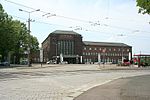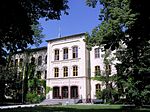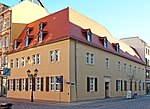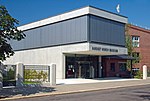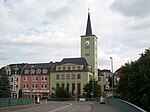Westsachsenstadion
Buildings and structures in Zwickau (district)Football venues in GermanyGerman sports venue stubsNazi architectureSaxony building and structure stubs ... and 2 more
Sports venues in SaxonyZwickau
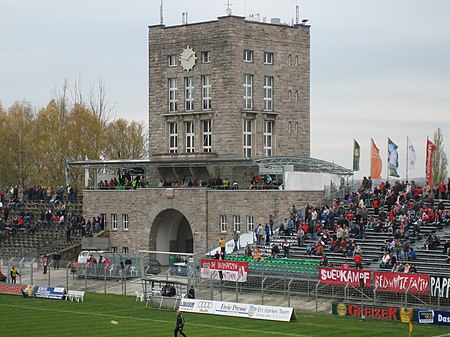
Westsachsenstadion is a multi-use stadium in Zwickau, Germany. Prior to being redeveloped in 2013 it was used mostly for football matches and served as the home stadium of FSV Zwickau until 2010. The stadium holds 5,000 people.
Excerpt from the Wikipedia article Westsachsenstadion (License: CC BY-SA 3.0, Authors, Images).Westsachsenstadion
Mountainbike Parcour, Langenweißbach
Geographical coordinates (GPS) Address External links Nearby Places Show on map
Geographical coordinates (GPS)
| Latitude | Longitude |
|---|---|
| N 50.697222222222 ° | E 12.485555555556 ° |
Address
Westsachsenstadion
Mountainbike Parcour
08056 Langenweißbach, Schedewitz (Zwickau-Süd)
Saxony, Germany
Open on Google Maps
